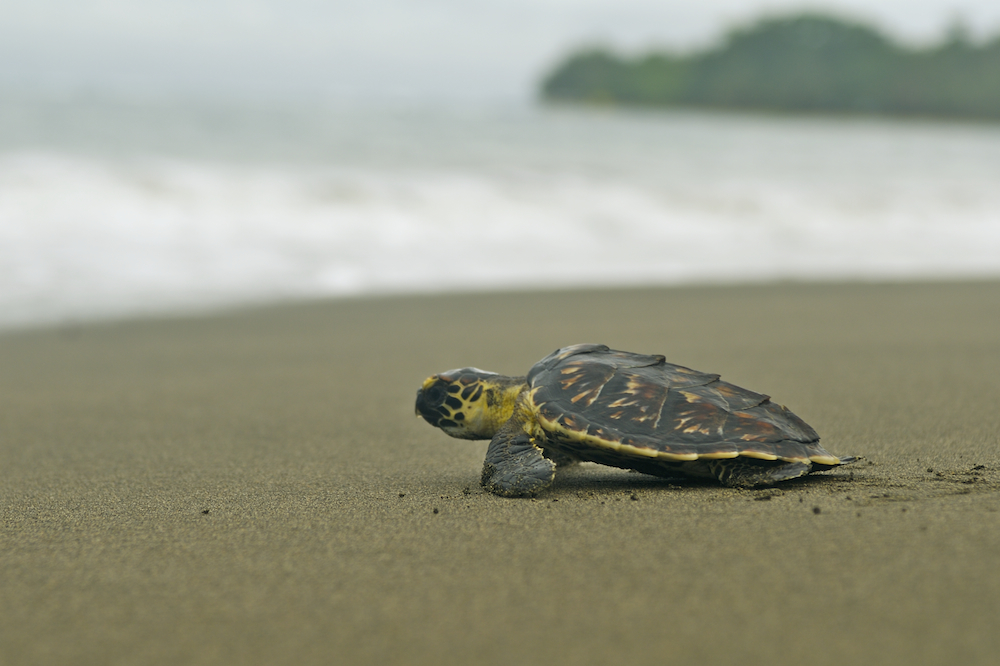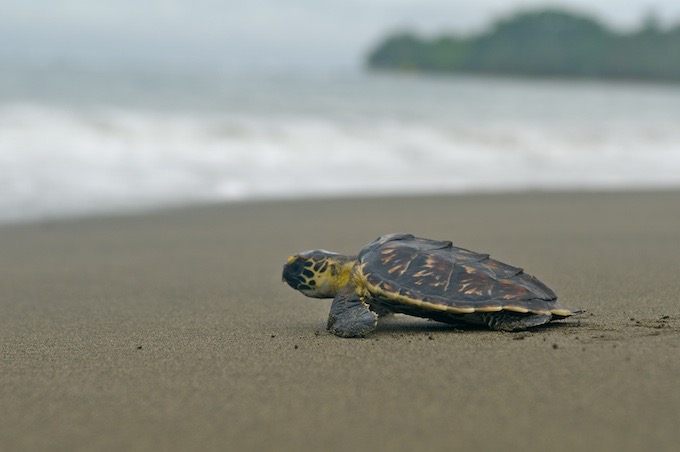
Juvenile Sea Turtles
Once hatchlings leave the nest, they are often not seen again until they return to coastal waters years later as juveniles. Loggerheads that are born on the east coast of the U.S. however, have been tracked out into the Atlantic, into an area known as the Sargasso Sea.
The Sargasso Sea is named for the Sargassum seaweed which floats here, trapped by currents that rotate clockwise around this large area of the North Atlantic. The currents which form the boundaries of the Sargasso Sea make up the North Atlantic Gyre, one of five major oceanic gyres found worldwide.
The Gulf Stream
The Gulf Stream makes up the western boundary of the Sargasso Sea and lies just off the east coast of the U.S. When hatchlings begin their journey off the East Coast they are picked up by the Gulf Stream and become part of this "floating nursery" where they will spend at least a year rafting with the seaweed, eating bite-sized, floating prey. The seaweed provides the little turtles cover from predators. Loggerheads in particular blend in almost perfectly with the Sargassum seaweed.
After their pelagic, open ocean phase, sea turtles now approximately the size of dinner plates, will return to coastal areas where they will forage and continue to grow until they reach sexual maturity (adulthood). During this coastal phase, juvenile and sub-adult turtles forage over an enormous area, using the high productivity of shallow, coastal areas to find abundant prey.
Sexual Maturity
Sexual maturity varies among sea turtle species but ranges between approximately 7 and 50 years. The smaller Kemp's and olive ridleys mature around the age of 10 years. Loggerheads, hawksbills, flatbacks, and greens mature between 20 and 50 years, and the enormous leatherback around 15 years. Once sea turtles reach sexual maturity, males and females will leave coastal areas and migrate, often thousands of miles, to breeding areas where they will mate and begin their adult, reproductive stage.
Juvenile Turtle Facts
Young sea turtles may spend as long as a decade in the open ocean before returning to coastal waters to grow and mature. This period of time is often referred to as "The Lost Years" by scientists.
The gender of a juvenile sea turtle cannot be determined by external characteristics. Once they are mature however, male sea turtles have a much thicker, longer tail than females.
Young turtles spend time in areas where currents converge and prey is abundant. Unfortunately these areas are also important for commercial fisheries because of their high productivity making young turtles vulnerable to interactions with fisheries. Learn more about Fisheries Bycatch.
The herbivorous adult green turtle is actually a carnivore as a juvenile. Because juvenile turtles use nearshore coastal waters, they are impacted by human activities and are often injured by boat strikes. See our Coastal Development page for more.
Magdalena Bay in Baja California Sur, Mexico, is a key foraging area for juvenile black sea turtles, a sub-species of green turtles.
What is SEE Turtles?
We're a non-profit organization that protects sea turtles through conservation travel and volunteer tours, our Billion Baby Turtles, Too Rare To Wear, & Sea Turtles & Plastic programs, our education programs, and by promoting inclusivity in the sea turtle community. Our award-winning programs help save sea turtle hatchlings on important nesting beaches around the world, work with the tourism industry to end the turtleshell trade, and get plastic out of sea turtle habitats. Learn more about our organization.
Photo credits: Neil Ever Osborne


